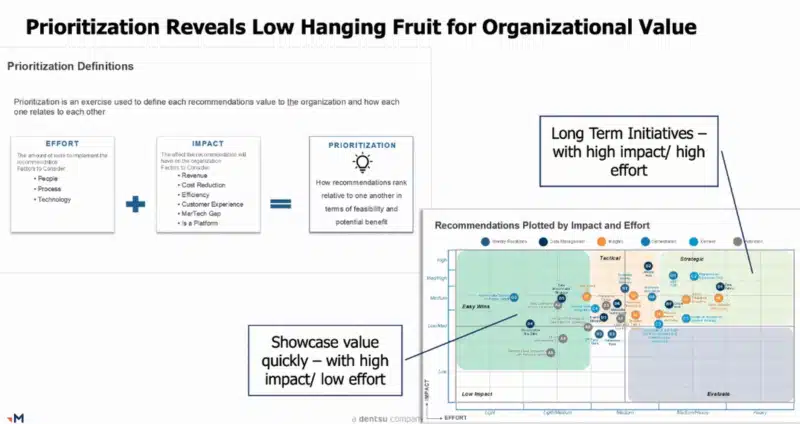How to build a successful marketing technology roadmap
Courtney Trudeau of Merkle shows how marketers can adopt new technologies without disrupting their organizations.
The rise in marketing technology platform offerings, coupled with consumer behavior shifts, has created a need for strategic transformation. Courtney Trudeau, Senior Director of Technology Strategy at Merkle, recently worked with Dick’s Sporting Goods to build out a marketing tech roadmap for the brand to address these issues.
“There have been huge changes with COVID-19, accelerating customer behavior, experience, and digital transformation,” she said in her presentation at our MarTech conference. “Even before that, there was this rise of digitally-native brands — brands that are born online — giving consumers more options to shop.”
It’s becoming clear that brands without this digital-first framework must adopt new strategies to keep up with these trends. But this isn’t about adopting the latest, greatest technology. Instead, marketers should put together a roadmap that provides insights into the most effective technologies for their audience.
Here are some tactics Trudeau recommends marketers take to build successful technology roadmaps.
Navigating new consumer trends and behaviors
“Customers are shopping not only online but on mobile,” said Trudeau. “People expect omnichannel shopping experiences. They demand service and they like shipping free shipping.”

Before addressing these trends with new marketing technologies, brands should pay attention to the latest (and changing) consumer behaviors. Technological growth always drives these changes, but the pandemic has sped them up and introduced new trends, such as the desire for greater personalization.
“People are craving connection,” said Trudeau. “People want connection not only with other people but with brands… They expect a personal experience.”
Tackling organizational challenges
Marketers should focus on addressing this need for personalization. But with the overwhelming amount of marketing technology choices available, people need a roadmap, says Trudeau. It can help organizations streamline their operations and avoid stagnation.
Here are some of the more common organizational challenges with marketing technology.
- Lack of understanding about customer-centric data management;
- Missing an identity resolution solution;
- Lack of self-service analytics and KPIs;
- Product-driven focus instead of customer journey orchestration;
- Overreliance on channel segmentation; and
- Content creation processes neglecting the needs of omnichannel.
“Brands are striving to become more customer-driven, but it’s hard to make that pivot from product-focus to customer-focus,” she said. “But technology can help enable that.”

Set a marketing technology strategy
Once marketers have a better grasp of market trends and organizational challenges, they’ll be more prepared to develop a technology strategy — that piece of the puzzle that can accelerate campaigns. Here are four ways Trudeau suggests marketers put it together.
- Align current state capabilities. The goal is to create buy-in from your entire organization, says Trudeau. Marketers should highlight where their organization is in terms of marketing technology.
- Identify future state KPIs. After pinpointing the brand’s current technology state, marketers can more easily identify goals.
- Offer recommendations to get to a future state. Once the KPIs are agreed upon, Trudeau says marketers should concern themselves with “articulating those clear recommendations and strategies to get from your current state to your future state goals.”
- Prioritize technology implementations. If the current status, KPIs, and recommendations have been clearly articulated to the rest of the organization, marketers can begin prioritizing the required technology implementations.
Create a technology roadmap, and bring others along
“There’s a lot of internal bias that comes from working in an organization and using technologies day-to-day,” Trudeau said. “There are either people who love it or hate it. So looking at your technology from a capability framework takes that bias out of it.”
Instead of ramming marketing technologies into organizational processes (some of which may be adverse to them), marketers should prioritize implementations based on effort, impact, and dependencies.

“Prioritization is super important,” said Trudeau. “It helps you recognize that low-hanging fruit that’s going to show value quickly, and those are the types of quick wins that show value to others.”
She added, “People will be invested if you bring them along the journey and make them feel like they have a voice.”
Watch the full presentation from our MarTech conference here (free registration required).
Opinions expressed in this article are those of the guest author and not necessarily MarTech. Staff authors are listed here.
Related stories